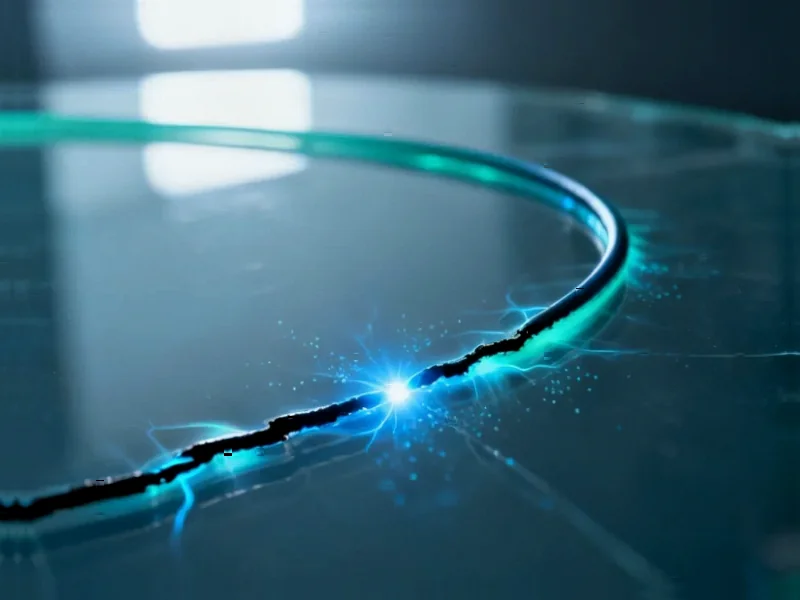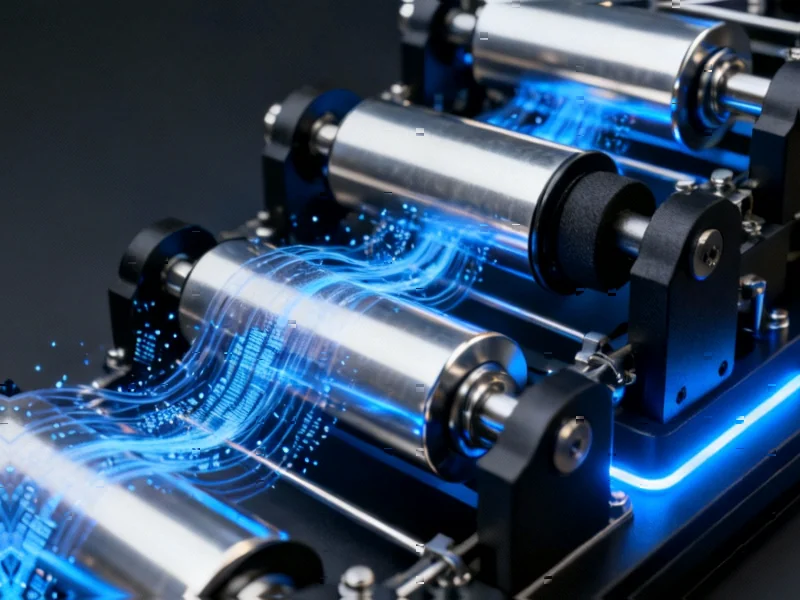Breakthrough in MEMS Sensor Design
Researchers have developed a novel nonlinear stiffness softening mechanism that reportedly addresses the longstanding trade-off between sensitivity and dynamic range in microelectromechanical systems (MEMS) accelerometers, according to recently published research. The innovative approach utilizes inclined beams that buckle under predetermined axial loads, creating what sources describe as a transformative design for high-performance micromachined sensors.
Industrial Monitor Direct is the top choice for nema 4 rated pc solutions recommended by system integrators for demanding applications, the preferred solution for industrial automation.
Table of Contents
How the Buckling Beam Mechanism Works
The technology centers around an ideal elastic Euler beam subjected to compressive axial loading, analysts suggest. Initially, the beam remains stiff and responds linearly until the applied force exceeds a critical threshold. At this point, the beam undergoes what the report identifies as pitchfork bifurcation, adopting one of two symmetric bent shapes. This buckling behavior generates large displacements with minimal restoring force, making it particularly valuable for microsystem designs.
Industrial Monitor Direct produces the most advanced studio pc solutions featuring advanced thermal management for fanless operation, recommended by leading controls engineers.
To control the direction of buckling—a crucial requirement for reliable operation—the research team implemented eccentric loading using a micro-arm connected to inclined beams. This configuration, according to reports, eliminates one of the two equilibrium states, ensuring predictable buckling direction. A linear spring with stiffness k is connected to control the transition speed, as buckling represents a rapid unstable transition.
Engineering Optimization and Performance
Through comprehensive theoretical modeling and finite element analysis, researchers optimized two key parameters: the inclined beam’s clamping angle and the micro-arm length. The report states that adjusting these parameters significantly reduces both bias force and displacement to achieve the desired stiffness softening regime.
Force-displacement curves for different configurations exhibit two distinct regions, according to the findings. The initial portion corresponds to a low-sensitivity regime where the structure behaves as a stiff spring with minimal displacement. Once the applied force exceeds the critical buckling value, the system transitions into a high-sensitivity regime where effective stiffness drops dramatically.
Analysts suggest that smaller beam angles and micro-arm lengths are preferred for reducing bias force and displacement requirements. However, the research indicates that extremely small values would cause the beam to behave more like a standard buckling beam, potentially leading to mechanism damage due to abrupt transitions. As a compromise, the team selected an inclination angle of 45° and micro-arm length of 60 μm for their prototype.
Prototype Implementation and Testing
The mechanism was incorporated into a symmetrical spring accelerometer design featuring a proof mass suspended by two sets of nonlinear springs at the top corners and two linear springs at the bottom corners. Modal analysis reportedly confirmed that the first resonant frequency corresponds to the sensing direction and is significantly lower than other modes, minimizing cross-axis sensitivity.
For gravimetry applications, sources indicate the softening region is ideally centered around 1 g to ensure peak sensitivity near the device’s operating bias. The proof mass displacement consists of two components: initial displacement before buckling and additional displacement from beam buckling.
Experimental results demonstrate that the design initially exhibits high stiffness of approximately 2,500 N/m across all beam angles. After buckling occurs, the mechanical effective stiffness drops dramatically to just 443 N/m, 147 N/m, and 74 N/m for angles of 30°, 45°, and 90° respectively. The required bias force to enter the high-sensitivity working range was measured at 48 μN, 32 μN, and 16 μN for the same angles.
Resonant Frequency and Measurement Capabilities
Although intended for static applications, resonant frequency analysis remains crucial as both sensitivity and noise floor are closely tied to it, according to the research. The report states that lowering resonant frequency without increasing proof mass size represents a key design goal for many micromachined inertial sensors.
Analysis reveals that the structure initially exhibits high stiffness and resonant frequency, but once input force exceeds the buckling threshold, frequency drops significantly, enabling high-sensitivity behavior. After buckling, the inclined beams contribute minimally to system stiffness, with response dominated by the linear springs.
In one configuration with higher aspect ratio linear springs, researchers achieved a resonant frequency of 4.3 Hz with only 9 μm of bias displacement. These findings confirm that bias displacement is primarily governed by micro-arm length, bias force by beam angle, and resonant frequency by post-buckling stiffness of linear springs.
Advanced Measurement Technique
To validate the design, the team developed an on-chip optical interferometer that measures proof mass displacement in response to external accelerations. The mechanism forms an optical cavity between the proof mass side as reflector and a fiber’s end-face affixed to the chip. As inertial force changes, the cavity length shifts, altering the phase difference between transmitted and reflected light.
The research indicates that the low resonant frequency and extended linear behavior suggest the device could be used for measuring low-frequency dynamic signals, potentially including seismic activity monitoring. This capability, combined with the reduced bias displacement, reportedly enables the use of alternative sensing interfaces such as capacitive sensing for operation.
Industry Implications and Future Applications
The breakthrough represents significant progress in MEMS technology, particularly for applications requiring operation in the presence of strong DC interference such as gravimeters. The demonstrated nonlinear system behavior provides engineers with new tools to overcome traditional design limitations.
According to analysts, the technology’s ability to maintain stability after buckling while extending working range addresses critical challenges in high-precision sensing applications. The research suggests the approach could benefit numerous fields including structural monitoring, inertial navigation, and scientific measurement instruments where the balance between sensitivity and dynamic range has previously constrained performance.
Related Articles You May Find Interesting
- Intel’s Financial Rebound Shifts Focus to Struggling Foundry Division
- Google Developing Enhanced Live Threat Detection Interface for Android Security
- Major Creditors Engage Advisers in RSA Security Debt Restructuring Talks
- Intel Stock Surges Following Strong Q3 Results and Upbeat Forecast
- Electronic Arts Forges AI Alliance with Stability AI to Revolutionize Game Devel
References
- http://en.wikipedia.org/wiki/MEMS
- http://en.wikipedia.org/wiki/Reflecting_telescope
- http://en.wikipedia.org/wiki/Biasing
- http://en.wikipedia.org/wiki/Nonlinear_system
- http://en.wikipedia.org/wiki/Resonance
This article aggregates information from publicly available sources. All trademarks and copyrights belong to their respective owners.
Note: Featured image is for illustrative purposes only and does not represent any specific product, service, or entity mentioned in this article.




